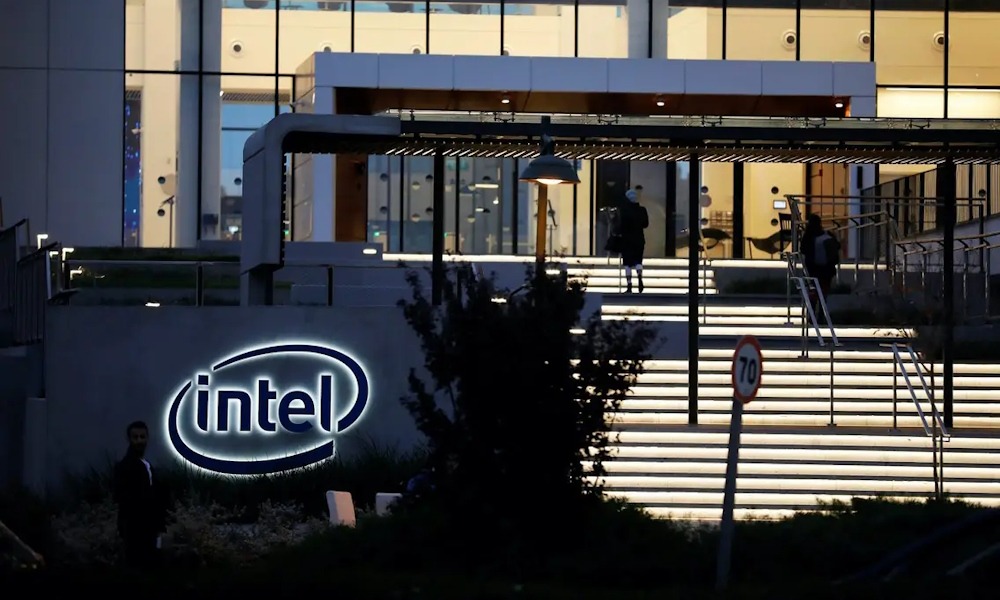Nvidia’s continued dominance is demonstrated by Intel.

Intel illustrates the enduring challenges Nvidia faces in maintaining its competitive edge. Nvidia appears to be losing some of its previously unassailable dominance in the market. However, Intel has recently demonstrated that taking on the dominant force in AI remains a formidable challenge. Intel’s fourth-quarter report released late Thursday came on the heels of a challenging week for Nvidia. The creator of artificial-intelligence chips and computing systems experienced a decline of over 18% in its market value following revelations of significant technical advancements by the Chinese AI startup DeepSeek. The recent developments indicate the feasibility of constructing sophisticated AI models at a comparatively modest computing expense, raising concerns about a potential decline in demand for Nvidia’s offerings.
The eventual outcome remains highly uncertain. Mark Zuckerberg, the chief executive of Meta Platforms and a significant customer of Nvidia, remarked in his recent earnings call that “it’s way too early” to ascertain whether the advancements of DeepSeek will result in reduced capital expenditure requirements for AI. He further noted that enhanced computing capabilities will inevitably result in superior AI systems, asserting that “a substantial investment in capital expenditure and infrastructure will confer a strategic advantage in the long run.” Meta intends to allocate up to $65 billion in capital expenditures this year, a significant increase from just below $40 billion in the previous year.
Intel appears unlikely to secure a substantial share of that opportunity. During the recent fourth-quarter earnings call, Intel Co-CEO Michelle Johnston Holthaus announced the company’s decision to forgo the market release of its Falcon Shores chip. Intel was poised to introduce its GPU accelerator, a chip category that has positioned Nvidia as the dominant player in the realm of artificial intelligence, later this year. In response to “industry feedback,” Holthaus indicated that the company has opted to utilize Falcon Shores solely as an internal test chip while it advances a rack-based system for AI computing.
This situation places Intel in a position to contest Nvidia in its own domain. Nvidia’s newest chip family, dubbed Blackwell, is now accessible on server racks, with certain variants necessitating liquid cooling systems due to their high performance demands in data centers. Demand for those products remains robust; analysts project that revenue from the Blackwell family will exceed $75 billion in Nvidia’s upcoming fiscal year, concluding in January 2026, as reported by Visible Alpha. Intel’s total business is anticipated to yield slightly more than $53 billion in revenue for approximately the same timeframe.
Falcon Shores marks yet another setback for Intel in its attempts to compete with Nvidia. During its third-quarter earnings call three months prior, Intel indicated that the third iteration of its Gaudi AI accelerator chip was experiencing lackluster demand and was projected to miss its conservative sales goal of $500 million for 2024. The prospects for the forthcoming rack-based system known as Jaguar Shores remain markedly uncertain, particularly given that Nvidia is poised to deliver Blackwell systems in substantial quantities over the next year. “Intel lacks a significant presence in the AI data center sector,” noted Rick Schafer of Oppenheimer in a communication to clients on Friday. “We do not anticipate any alterations prior to 2027.”
The future identity of Intel as a corporation remains highly uncertain. The chip giant, once thriving, has seen a staggering cash burn of nearly $15.7 billion last year, marking its third consecutive year of negative free cash flow. This financial strain comes as the company embarks on an ambitious turnaround strategy aimed at advancing its manufacturing technology, establishing a foundry business to produce chips for external clients, and addressing the erosion of market share faced by its own products amid fierce competition from industry players such as Nvidia and Advanced Micro Devices.
“The most straightforward approach to tackle these inquiries is to witness an improvement in product offerings, a process that will undoubtedly require time,” stated Joseph Moore of Morgan Stanley on Friday. Analysts, as reported by FactSet, anticipate a cash burn of $9.9 billion for the current year. Intel’s stock has experienced a decline of over 50% in value over the past year, with a nearly 17% drop following the unexpected ousting of CEO Pat Gelsinger in December. Intel finds itself in a position where time is a scarce resource.










